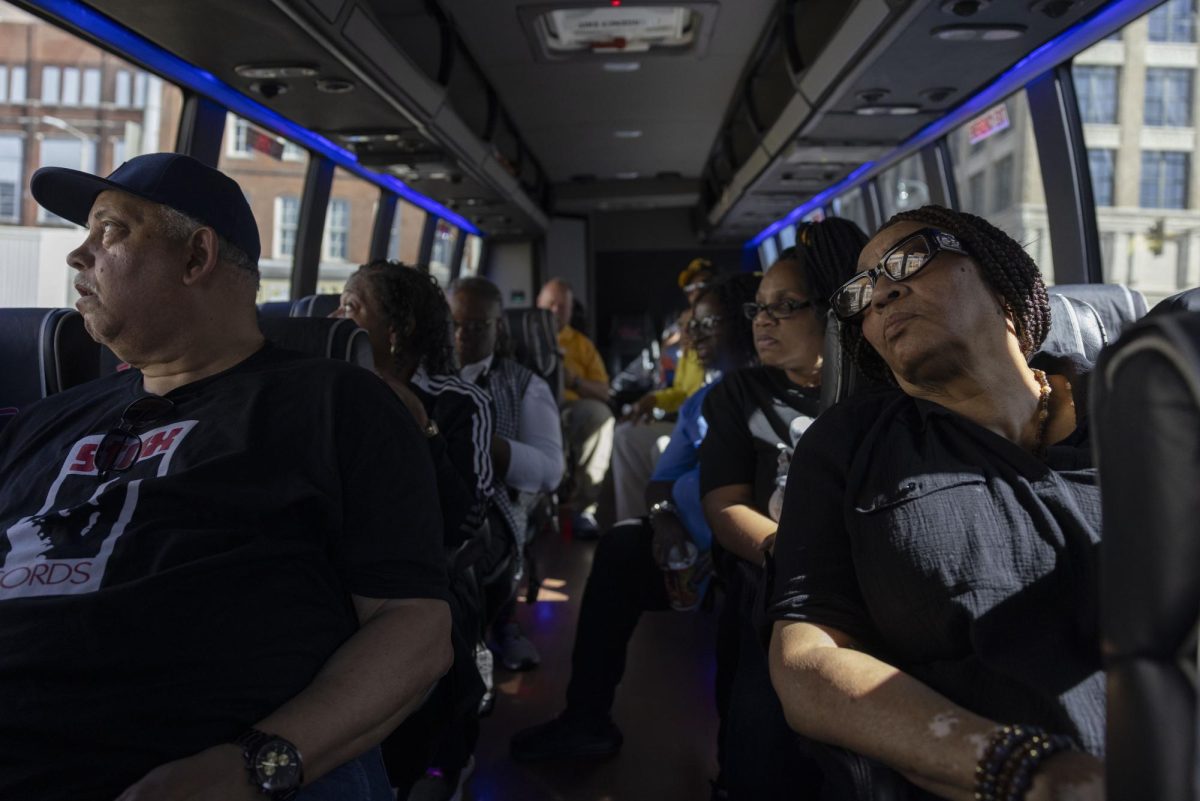The day the Old Main burned down
June 24, 1999
Mary Simon was riding the Amtrak from Champaign to Carbondale June 8, 1969, when she heard SIUC’s Old Main building was on fire. After arriving in town, Simon, a teacher of freshman English whose offices were on the third floor of the Old Main building, went to see the wreckage.
It was a wrenching experience, she said. I was stunned and saddened; it was a sad day.
At a time of administrative upheaval, members of the SIUC community remember a summer 30 years ago when turmoil around the nation resulted in the devastation a University symbol.
Advertisement
A long period of student unrest and rioting in the late 1960s led to the burning of the Old Main building, the oldest building on campus and a University landmark.
Shortly after 7:30 a.m. on that quiet Sunday morning, fire broke out in the southwest corner of the old building’s attic. The on-duty custodian who discovered the blaze found dried mops covered with paint and rags strewn throughout the attic.
Fire crews from seven towns responded as students and physical plant workers labored to remove office equipment and files from the burning building.
University President Delyte Morris had to be ushered out of the building by firefighters as he attempted to salvage valuable manuscripts. Afterward, he gave instructions to firefighters and directed students who offered their assistance.
More than 400 students formed a bucket brigade to put out the fire, while others manned water hoses. But by 1 p.m., historic Old Main was reduced to a charred hull.
It was a shock to President Morris above all, Marvin Kleinau, emeritus professor, said.
Morris had taken the University from 4,000 to 20,000 students. More than 85 buildings had been constructed on campus during his term as President, and Old Main was to Morris a symbol of the campus he had helped to transform.
Advertisement*
He suffered more than anyone, Kleinau said. It was an enormous blow to President Morris.
Although rumors abounded as to who started the blaze, the case was never solved, and no one was ever arrested in the arson.
Firemen reported finding a profane scrawl on a chalkboard with the words P— on Old Main. Old Main is burning, but whether it was written before or after the fire started is not known.
Originally constructed on May 17, 1870, Old Main was partially consumed by fire in 1882. Discovered in the roof of the building’s museum, the fire left the limestone and brick structure a burned-out shell. A second Old Main built on the foundations was dedicated Feb. 24, 1887.
As late as 1950, Old Main housed more than 70 percent of classes at SIUC. In 1969 it was home to the University Museum, offices for all teaching assistants in the department of English, a foreign languages teaching laboratory, the Air Force ROTC rifle range and 14 classrooms.
Kleinau believes the burning of Old Main came as a result of anti-war sentiment toward Vietnam. During the time of the fire, SIU was home to an institute for Vietnam studies, for which it had received federal money.
Kleinau said student activists who opposed the war sought ways to disrupt the University’s involvement, and they were successful. Burning Old Main down got rid of the ROTC facility.
It was an enormous blow to the center of the University.
After the burning of Old Main, hostility increased to the point that the campus was forced to close. The state police and the militia were brought in and a curfew was instituted.
(The burning of Old Main) wasn’t the climax or the beginning; it was one event that marked the problem, Kleinau said. Not anybody thought it would ever amount to the burning of Old Main. It came as a surprise and a shock.
William Doerr, superintendent of University Farms during those years, believed students were unaware that the rioting would culminate in the fire.
An undergraduate student I knew had tears in his eyes, Doerr said. He said, If I had known it would end like this, I wouldn’t have been involved.’
They didn’t know. They thought it was cool to be involved in riotous activities against the University. They thought it was recreational at the time.
Tom Purcell, associate director for Institutional Research and Studies, was director of computing in 1969. He recalls student antics leading up to the fire.
I remember one day I went in after lunch and sitting on my desk was a cardboard box, about 1 foot cubed, Purcell said.
When he opened the box he was surprised at what he saw sitting among pieces of newspaper.
There was a hand grenade laying there, he said. But it had been diffused.
Students who had staged a sit-in on the lawn two weeks before the blaze or sympathized with protesters aided firemen in removing office equipment, files and records, tests, papers and other valuables from the burning building.
SIUC was not the only campus affected by student radicalism. Political conditions were turbulent, and the burning of Old Main was an indication of that.
It was a mark of the times, Purcell said. Students were expressing concern about not only local, but world issues. They were rioting and bringing things down.
Because of its age, Old Main was already beginning to deteriorate, and Kleinau said he believes it needed to be torn down.
It was old and ugly, and it was replaced by a nice open area and a peaceful place to walk, he said. It was just an old, ugly building with too many stairs.
Simon said she prefers to dwell on the many happy occasions, although it is important to remember the circumstances surrounding the fire.
It was a national time of sadness and restlessness, and this campus felt that, Simon said. There was sadness all over the country, and that impact was felt here, too.
Advertisement










Frank Voris • Jan 20, 2021 at 2:04 pm
Authorities need to broadcast high and low, no prosecutions shall be sought. Ask for those who started fire to step forward. The full story would make a great movie.